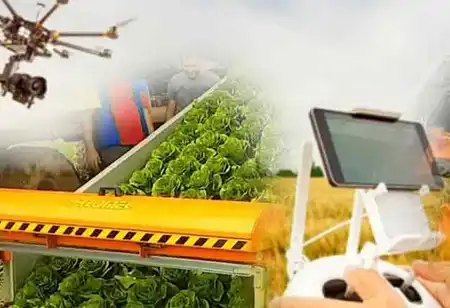Thank you for Subscribing to Agri Business Review Weekly Brief
The Agricultural Development
Agriculture is the art and science of cultivating the soil, growing crops, and raising livestock.

By
Agri Business Review | Thursday, November 24, 2022
Stay ahead of the industry with exclusive feature stories on the top companies, expert insights and the latest news delivered straight to your inbox. Subscribe today.
Agriculture involves preparing plant and animal products for people and their distribution to markets.
Fremont, CA: Agriculture is the art and science of cultivating the soil, growing crops, and raising livestock. It involves preparing plant and animal products for people and their distribution to markets.
Agriculture gives most of the world’s food, and fabrics; cotton, wool, and leather are all agricultural products. Agriculture also gives wood for construction and paper products. These products and the agricultural methods utilized may differ from one part of the world to another.
Start of agriculture
Over centuries, the progress of agriculture contributed to the climb of civilizations. Before agriculture became widespread, people depleted most of their lives searching for food—hunting wild animals and gathering wild plants.
Then, about 11,500 years ago, people slowly learned how to grow cereal and root crops and compose themselves to life following farming. Before 2,000 years, much of the Earth’s population had relied on agriculture.
Agriculture kept earlier nomadic people near their fields and incited the development of permanent villages. These became linked through trade. New economies were so prosperous in some areas that cities grew and civilizations developed.
Bettered technology
New agricultural inventions dramatically increased food production. An improved horse-drawn seed drill was one of the most important of these developments. Until that time, farmers seeded by hand. Together with new machines, there were many important advances in farming methods.
Agricultural science
Tractors had supplanted draft animals and steam-powered machinery. As a result, farmers used machines in almost every cultivation and livestock management stage.
Farmers have used various methods to protect their crops from pests and diseases. For example, they have put herb-based poisons on crops, elected insects off plants, and bred strong varieties of crops and crop rotation to control insects. Farmers also relied on natural fertilizer—materials like manure, wood ash, fish or fish parts, ground bones, and bird and bat waste, named guano, to restore or increase nutrients in the soil.
Fight against hunger
Experts think that the hunger problem will be solved in two ways. First, citizens of all countries are required to have the ability to grow or purchase their food. Second, citizens of all countries must have accountable diets and spending habits. Agricultural science will enable countries to adjust to healthier methods of food production. For example, scientists are developing new high-yield varieties of crops that need fewer fertilizers or pesticides. Such crops reduce the need for using expensive chemicals and trade.
The problems of feeding the hungry cannot be encountered unless the world’s land and water are safeguarded. Agricultural practices in advanced and developing countries have severely lost valuable topsoil, water, and other resources. Overcrowding has pushed a growing number of farmers onto lands too fragile to sustain cultivation. Demand for food has led to enhanced irrigation worldwide. In some areas, irrigation has caused water tables to drop, rivers to run dry, and wells to empty. In addition, agricultural chemicals that increase production often contaminate soil and groundwater and disrupt food chains.





